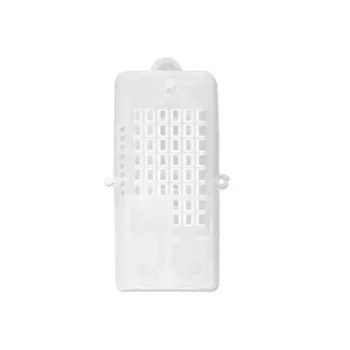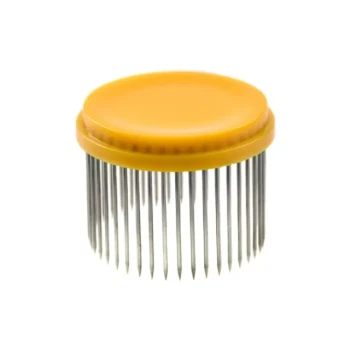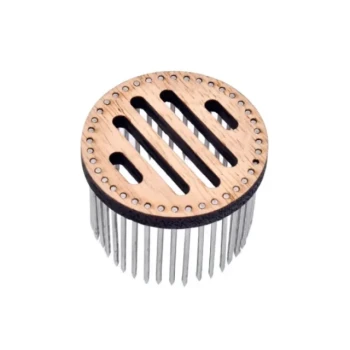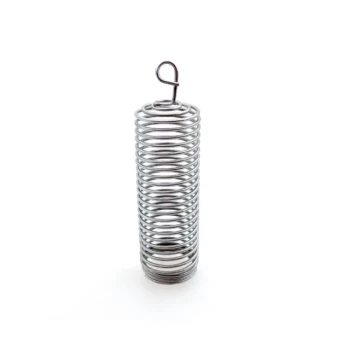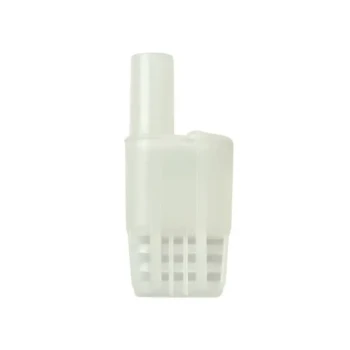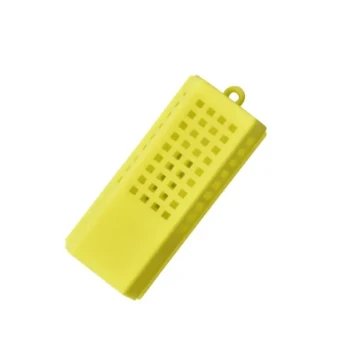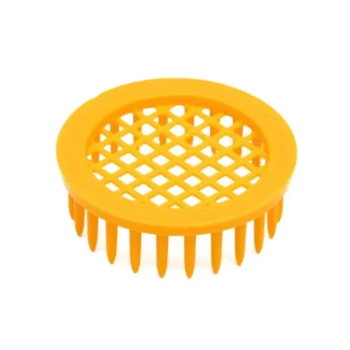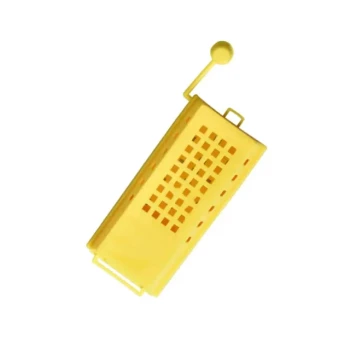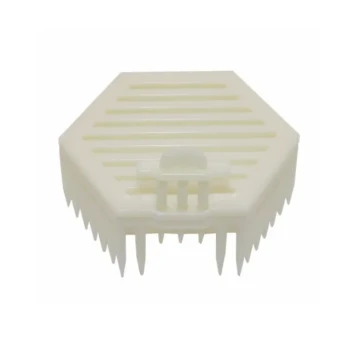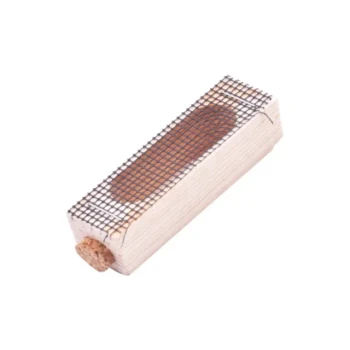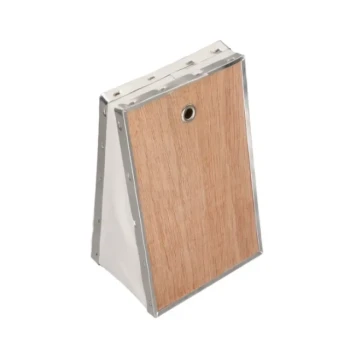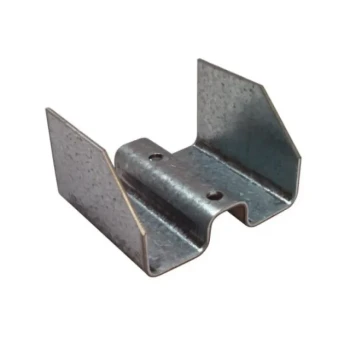The primary purpose of the candy release tube in a queen cage is to act as a time-delay mechanism. This controlled, slow release is critical for ensuring the colony's bees gradually accept the new queen's unique scent, or pheromones, preventing them from identifying her as a foreign invader and killing her.
The candy tube isn't just a gate; it's a diplomatic tool. It forces a crucial period of social and chemical acclimation, turning a potentially violent confrontation into a successful integration.
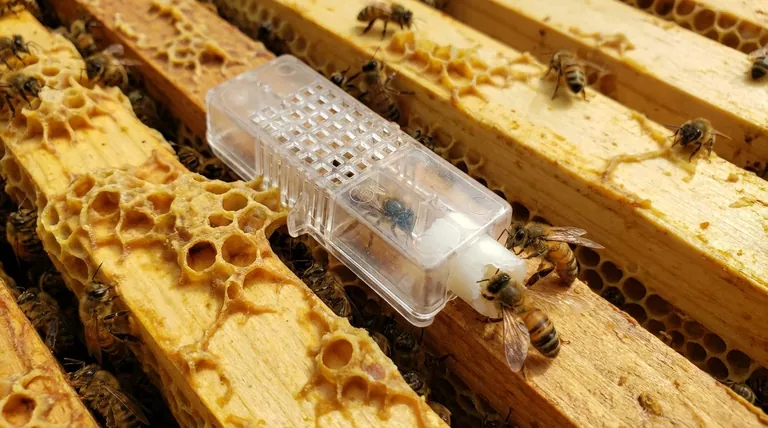
The Science of Queen Acceptance
Successfully introducing a new queen is one of the most delicate operations in beekeeping. The colony's survival and temperament are tied to a single individual, and her acceptance is governed by complex chemical signals.
The Role of Pheromones
A honeybee colony operates as a single superorganism, unified by a constant flow of chemical messages called pheromones. The queen's unique pheromone signature signals her presence, her reproductive status, and maintains social order, suppressing the development of ovaries in worker bees.
When a queen is removed, her pheromones fade, and the colony quickly enters a state of distress.
Overcoming the "Foreigner" Response
Introducing a new queen into this environment is a shock to the system. The workers will immediately detect her "foreign" pheromones, which do not match the scent of their previous mother.
Their instinctual response is to perceive her as an intruder. They will attack her in a defensive behavior known as balling, where they surround the queen in a tight cluster, vibrating their wing muscles to generate lethal heat.
How the Candy Tube Mediates the Introduction
The queen cage provides a physical barrier, protecting the queen from the initial aggression. The candy tube is the key to breaking down this hostility.
As the worker bees from inside the hive chew through the sugar candy to release the queen, they are constantly exposed to her pheromones through the cage's screen. Over the course of one to three days, her scent permeates the hive.
Simultaneously, the new queen begins to pick up the colony's specific scent. This gradual chemical exchange re-calibrates the colony's identity, leading them to accept her as their new monarch by the time she is finally released.
Common Pitfalls and Considerations
While the candy tube is a highly effective tool, the process is not foolproof. Understanding the potential failure points is key to troubleshooting and ensuring success.
Why a Fast Release Fails
Manually releasing the queen too early is the most common mistake a new beekeeper can make. Bypassing the candy tube acclimation period almost always results in the queen being rejected and killed. The workers have not had sufficient time to adapt to her pheromones.
When the Candy Is the Problem
Occasionally, the candy can be too hard for the bees to chew through, especially in cold or dry conditions. If the queen is not released after four or five days, you may need to intervene by carefully creating a very small hole in the remaining candy to assist the bees.
Checking Colony Status First
Introducing a new queen into a colony that is not truly "queenless" will fail. If the colony already has a virgin queen or has developed laying workers (workers whose ovaries have activated), the new queen will be seen as a rival and killed. Always confirm the hive's status before introduction.
Making the Right Choice for Your Goal
The goal is always the same: a healthy, productive colony with a well-accepted, laying queen. Your approach depends on your assessment of the hive.
- If you are requeening a standard, recently queenless hive: Trust the process. Place the queen cage correctly between two frames of brood and allow the bees to release her via the candy tube over 2-3 days without disturbance.
- If you are introducing a queen to an aggressive or long-queenless colony: Be extra cautious. Ensure no laying workers are present and give the colony the full time needed to release her. Avoid the temptation to rush the introduction.
- If you are a beginner beekeeper: The candy tube method is your most reliable tool for queen introduction. Treat it as a non-negotiable step for ensuring the colony accepts its new queen.
Ultimately, patience is the beekeeper's greatest asset during queen introduction.
Summary Table:
| Purpose | Function | Key Benefit |
|---|---|---|
| Time-Delay Release | Worker bees chew through sugar candy over 1-3 days. | Allows gradual pheromone exchange between the new queen and the colony. |
| Pheromone Acclimation | The queen's scent permeates the hive through the cage screen. | Prevents the colony from identifying her as an intruder and attacking her. |
| Colony Acceptance | Forces a period of social and chemical integration. | Turns a potentially violent confrontation into a successful requeening. |
Ensure your next queen introduction is a success with the right equipment from HONESTBEE.
For commercial apiaries and beekeeping equipment distributors, a reliable queen introduction is critical for maintaining hive health and productivity. The tools you use directly impact your success rate. HONESTBEE supplies high-quality, durable beekeeping supplies and equipment designed for professional beekeepers like you.
Let us help you build a stronger, more productive operation. Contact our wholesale team today to discuss your equipment needs and place your order.
Visual Guide
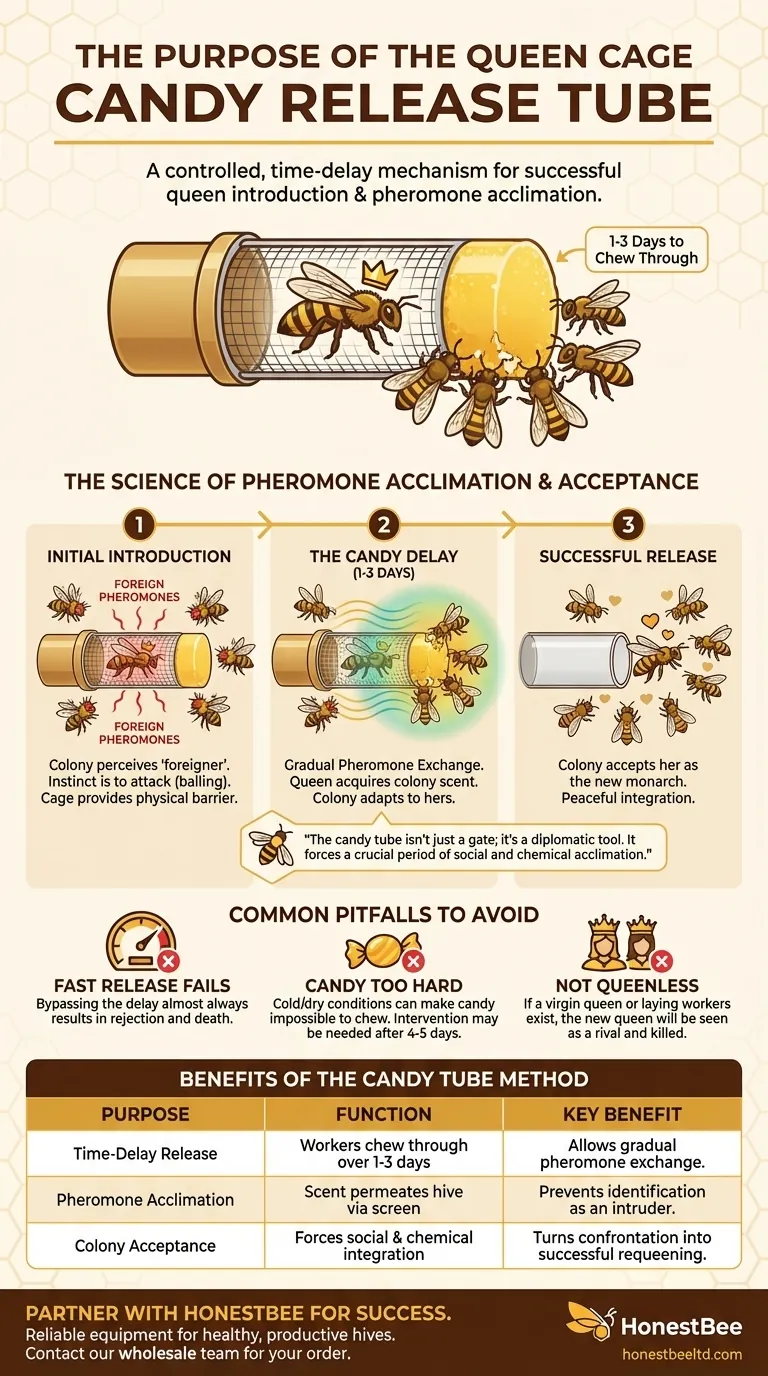
Related Products
- Professional Multi-Functional Queen Bee Cage
- Professional Round Push-In Queen Cage with Metal Tines
- Premium Wood and Steel Push In Queen Cage
- Durable Galvanized Steel Spring Queen Bee Cage
- Multi-Function Queen Roller Cage and Catcher
People Also Ask
- How should a queen cage be maintained over time? Ensure Queen Introduction Success
- What items are needed to place the queen bee's cage in the hive? A Guide to Successful Queen Introduction
- How long does it typically take bees to adjust to a new queen? Master the 2-7 Day Acceptance Window
- What are the components of a standard queen cage? A Guide to Safe Queen Introduction
- What is sequestration, and how does it help bees reorient? A Safer Guide to Hive Relocation
